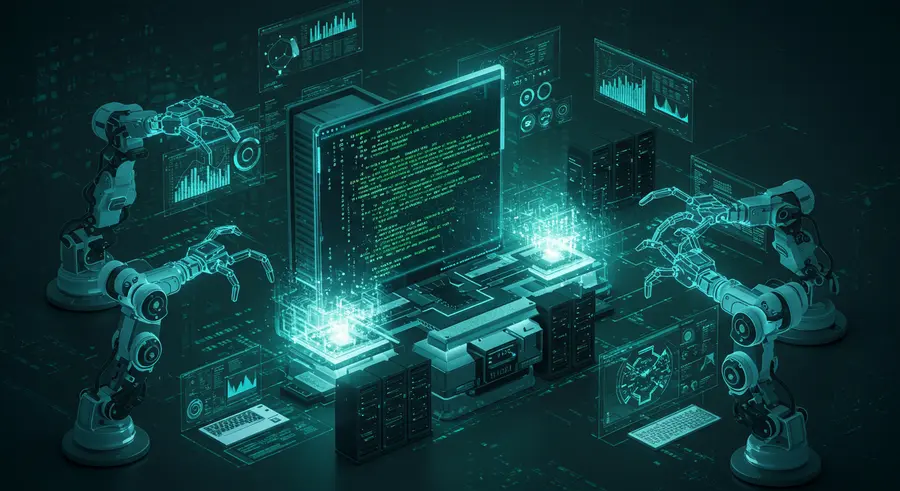Appearance

Welcome, fellow developers and quality assurance enthusiasts! 👋 Today, we're diving into a topic that's rapidly transforming the landscape of software development: the integration of Artificial Intelligence (AI) in Automated Software Testing. Gone are the days when testing was a tedious, manual, and often bottleneck-creating phase. With AI, we're ushering in an era of smarter, faster, and more efficient testing processes.
Why AI in Automated Testing?
The traditional approach to software testing, while essential, can be resource-intensive and prone to human error. As software complexity grows, so does the challenge of ensuring its quality and reliability. This is where AI steps in as a game-changer. AI can analyze vast amounts of data, learn from patterns, and even predict potential issues, significantly enhancing the effectiveness of automated tests.
Think about it:
- Faster Test Creation: AI can assist in generating test cases and scripts, reducing the time and effort required for test development.
- Smarter Test Execution: AI can optimize test execution by prioritizing tests based on risk, identifying redundant tests, and even self-healing broken tests.
- Improved Defect Detection: AI can go beyond simple assertion checks, using machine learning to detect anomalies and predict defects that might be missed by traditional methods.
- Enhanced Test Coverage: AI can help identify gaps in test coverage, ensuring that critical functionalities are thoroughly tested.
Practical Applications of AI in Automated Testing
Let's explore some tangible ways AI is being applied in automated testing today:
1. Test Case Generation and Optimization
AI-powered tools can analyze application code, user behavior, and existing test data to automatically generate new test cases. This doesn't just save time; it also ensures a broader and more effective test suite.
- Example: A tool might analyze user interaction logs to identify common user flows and automatically generate end-to-end tests for those paths. It can also suggest optimal data sets for testing various scenarios.
2. Self-Healing Tests
One of the biggest pain points in automated testing is maintaining tests when the UI or underlying code changes. AI can help here by automatically adapting test scripts to minor changes in the application, reducing maintenance overhead.
- Example: If a button's ID changes, an AI-powered test framework might recognize the button based on its text or surrounding elements and automatically update the locator in the test script.
3. Predictive Analytics for Defect Prevention
AI algorithms can analyze historical defect data, code changes, and development metrics to predict areas of the application that are most likely to contain defects. This allows teams to focus their testing efforts proactively.
- Example: An AI model might flag a specific module as high-risk due to a high number of recent code changes and a history of defects, prompting more thorough testing in that area.
4. Anomaly Detection and Visual Testing
AI can be used to detect visual anomalies and deviations in the UI that might indicate a bug. This is particularly useful in ensuring a consistent user experience across different devices and browsers.
- Example: An AI visual testing tool can compare screenshots of an application across different builds and flag any unexpected visual changes, such as misaligned elements or incorrect fonts.
5. Natural Language Processing (NLP) for Requirements Analysis
AI can analyze natural language requirements and convert them into executable test cases, bridging the gap between business needs and technical tests.
- Example: An NLP-powered tool can read a user story like "As a user, I want to be able to log in with my email and password" and automatically generate test scenarios for successful login, invalid credentials, and locked accounts.
The Future of AI in Software Testing
The journey of AI in software testing is just beginning. We can expect even more sophisticated applications in the future, including:
- Automated Test Environment Provisioning: AI could dynamically provision and configure test environments based on test requirements.
- Intelligent Test Data Management: AI could generate realistic and diverse test data on the fly, eliminating the need for manual data creation.
- Human-like Exploratory Testing: Advanced AI could simulate human exploratory testing, uncovering bugs that are difficult to find with scripted tests.
- Full Lifecycle AI Integration: AI will be seamlessly integrated across the entire software development lifecycle, from requirements to deployment, ensuring continuous quality.
Conclusion
AI is not here to replace human testers but to augment their capabilities, freeing them from repetitive tasks and allowing them to focus on more complex, creative, and strategic aspects of quality assurance. Embracing AI in automated software testing is not just about efficiency; it's about delivering higher quality software faster and with greater confidence.
To learn more about the fascinating world of AI in software development, check out this informative page: AI in Software Development: Key Opportunities + Challenges
Stay curious, stay innovative, and keep building amazing things! ✨